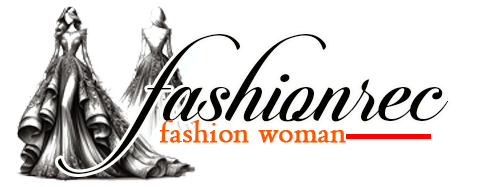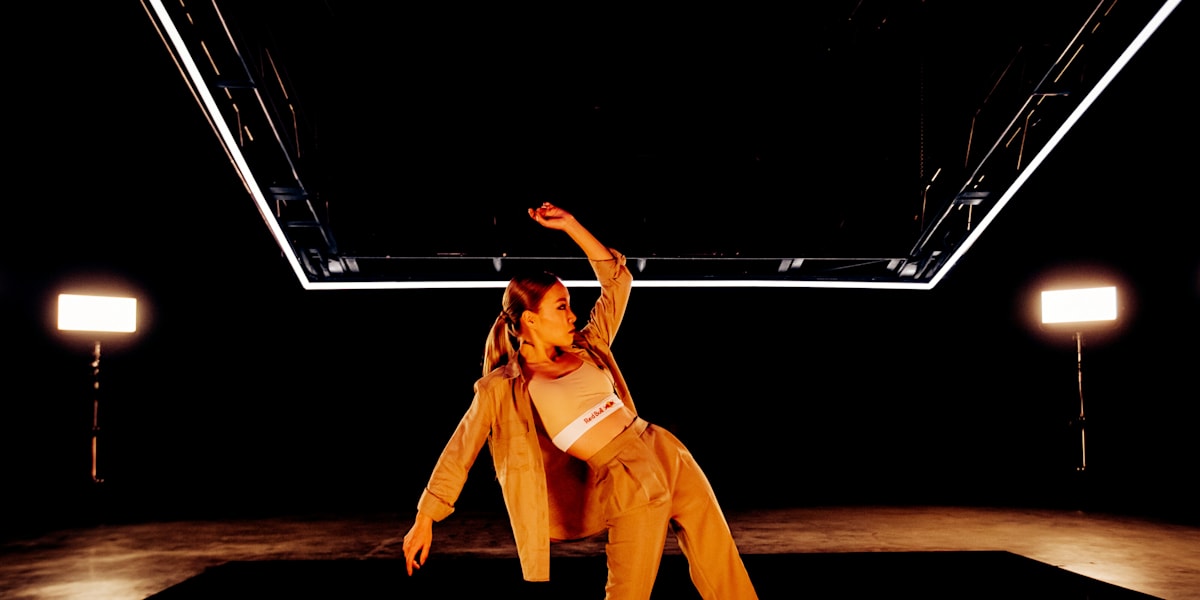Table of Contents
In 2021, it is no easy task to decipher a hip-hop dancer from a popper/voguer, etc., based on their personal fashion flex and choice of fit.
Today’s street dancers blend multiple genres and moves to create their own highly unique style on the dance floor and in battle. And when it comes to their clothes, the same method is applied. Dancers are copping an eclectic dress sense as well as experimenting with all the dope trends from their predecessors.
But take a step back in time to the place where these street dances first exploded from boomboxes and on to blocks and nightclubs, – and you’ll discover that fashion within these culturally rich styles run just as deep as the steps.
Soul Train dancers dressed to the nines and worked asymmetrical hairstyles while lockers showed how fresh striped socks and cropped trousers could be. The maximal high fashion looks served by voguers and waakers took street dance fashion to unthinkable levels. While everything else from Kangol hats, gold nameplates, caps and face tattoos, from hip-hop heavyweights to poppers rocking hush puppies, can still be found decades later on the dancers with the waviest fashion.
Because of that, a sizeable credit is owed to each street dancer who pioneered the fierce and iconic looks for their genre. In the end, their visual and fashion aesthetic not only defined the style of dance they were doing but multiple other visuals, mood boards and mediums. Multiple catwalk shows, music videos, motion pictures, art exhibitions, hip-hop and subcultures around the globe have been born off the back of these looks. Even more the reason the new-gen are rocking the looks today.
Poppers are masters when it comes to detail. So unsurprisingly their personal styling and fashion taste is no different. Popping fashion is slick, smooth and all class.
It can be long oversized jackets, wide leg, baggy pants, tailored waistcoats, and open shirts. Headgear is prominent and ranges from fedoras to trilby’s to snapbacks and flat caps.
Fresno poppers back in the 80’s finished off looks with a pair of smooth gliding Hush Puppies.
Some poppers today rock skinny jeans, spandex or leather pants. Adidas bomber jackets, crop tops and retro track suits can be found on poppers going for a more old school look. Brands like Evisu, Supreme and Polo have made a hige comeback. As well as dresses or long tops over tight pants.
An important elements is normally a garment that flows.
In 2021, Japanese poppers are the funkiest and freshest dressers leading the scene.
The global impact of hip-hop fashion is unprecedented. From the moment hip-hop blasted into the Bronx inner-city youth brought an original flavor that contributed to the style elements. In the ’80s dancers wore adidas tracksuits, bomber jackets emblazoned with crew logos, Kangol bucket hats, and hi-top fades. Soon those same trends were being reworked by kids on the west coast the same way rap music exploded over there and not long after across the globe.
Large glasses, nameplate belts, multiple rings and gold chains became a key trend among male dancers and females who also wore oversized door-knocker like earrings, chain belts and tribal accessories.
If it sounds like hip-hop was based on flash, Philadelphia rapper and OG MC Schoolly D summed the history behind the fashion best “Wearing gold and heavy metal accessories is not something that was born and raised in America. This goes back to Africa. When we come out on the dance floor, or as rappers, when you come out to cypher, we’re in the hip-hop field battling. We’re the head warriors. We got to wear our most fly armour. We’re saying to our opponents we’re here to conquer.”
Throughout the ’90s, the confident flex continued. Female rappers and dancers like Aaliyah and TLC popularized baggy jeans for women with crop tops. Designer labels like Polo and Tommy Hilfiger infiltrated the scene. Bold colorful African prints came in at one point on silk blouses and headgear. There was oversized style suits and tailoring, and even giant balloon style harem pants.
Some hip-hop dancers today are even creating their own lines….and this is only scratching the surface.
Locking creator Greggory ‘Campbellock Jr. ‘ and his iconic crew The Lockers took the entertainment industry, Soul Train and the dance world by storm. They created an entirely new street dance form that captivated audiences and performed it with distinct fashion style that lockers are still wearing decades later.
Locking fashion style is made up of loud striped socks, pegged pants that stopped at the knees, bright colourful satin shirts with big collars, big bow ties, gigantic apple boy hats, and white gloves. There were criss-crossed suspenders under tuxedo jackets and as the genre progressed, some dancers wore knee pads to protect their knees for acrobatic moves and splits.
Waacking was born in the LGBT clubs of Los Angeles, during the 1970s disco era. As the dance caught fire, many of the pioneers were invited into Soul Train. Immediately the level of fashion on the show soared to boiling point.
Originally wracking was mainly danced by the Black and Spanish Community. It evolved from drag queens and Hollywood starlets from the 1920’s to the ‘60s like Greta Garbo, Rita Hayward and Marilyn Monroe and had a focus on extravagance and elegance.
Waackers have always been highly original. Some wore oversized jackets to add more movement, men and women wore high boots with pants tucked inside the boots and tight shirts with shirt sleeves rolled up or cut off. Women on Soul Train wore high heels and full skirts so when they turned the skirt would fly up to the beat.
Waacking is one of the hottest street dances on the planet in 2021 and dancers are still utilising a lot of templates of waacking icons from the past. Clothing that accentuates movement and angles as much as possible, long nails to articulate hand gestures, heels fishnets, boots, more is more.
Many of the leading stars of the scene are launching their own brands.
PhDs could be written charting the astronomical impact voguers and vogueing have played on fashion, subculture, music, photoshoots, art exhibitions and beyond.
From the outset, voguers delivered maximal looks that superseded any other dance genre. Vogue dance presents gender as a performance. The visual elements are at the forefront. Voguers pretend to apply makeup (“beat face”), style hair and don extravagant clothing through the dance moves.
The street dance itself is divided into further categories to highlight “look” alongside technique.
In a Ballroom battle categories will include “Beauty and Face”—the dancer must sell their face like they are on a photo shoot set for a major fashion magazine. The point is to highlight their face, best features, in the way they move down the runway, using hands, and angles. Extreme detail is placed on the make-up and contouring of the face.
Another category of course is “Runway” wheredancers are judged purely on the style of their strut, uses and look. The garments can be elaborate and highly stylized and no element or piece can fall off during this battle or the dancer will be disqualified.
Finally, there is the “Fashion” category. Within this category can be sub-themes such as “OTA BIZARRE” where the dancers will win based on the most bizarre and out-of-this-world look. As well as niche categories like “OTA MODIFIED BODY” which can consist of voguers showing piercings, hooks, tattoos, body modification etc. Likewise to “Beauty and Runway” all elements of their look must “hold up” as in, not fall off.
In a full out battle and performance vogues have flexed all sorts of looks. Outrageous headpieces, wig changes, multiple outfit reveals, thigh high heeled boots, PVC, chiffon, gloves, long nails. High neck tops, low back gowns, tuxedos, corsets, leather. Bodysuits, catsuits, Madonna cone-shaped bras, harnesses. Mesh, lace, extreme eyewear. You name it!
If you go back to ’70s Jamaica when Dancehall began as a party dance, you’d be forgiven for not recognizing the aesthetic you see from dancers today.
There was a strong Caribbean influence in terms of hairstyles. Dancers wore big heeled boots, platforms, bell bottoms and crop tops.
Once the ’90s hit, Dancehall queens brought the fashion of the genre to blistering levels. Females wore fishnets, bold colours, bra tops, neon wigs, and long, outrageous nails.
Male dancers rocked high top fades, baggy pants, mesh singlets and brand name labels like Clarks, Gucci, Levi’s and Hilfiger.
As the musical genre propelled itself across the globe and the technical and artistic level of the dance evolved to levels no one could have predicted the fashion did so as well.
From 2000-the present Dancehall, fashion has played a seminal role in the aesthetic of designer campaigns, films, music videos, rappers and singers looks, lingerie brands the list goes on.
Dancers today wear tassel shorts, shredded denim, latex, spandex, mesh, bright Caribbean prints, multi-coloured braids etc. There may also be elements of bulletproof style vests, re-worked military looks. Graphic prints. The bolder and the more x-rated the look = the biggest hype.
Chicago Footwork and House were born in the clubs. Given the speed of both genres and the packed out nature of the dancefloor, (their top practice spot) dancers wear very little or loose clothing. Men and women wore cropped/cut off t-shirts or fitted tops tucked into baggy pants. House dancers at raves wore everything from acid smiley faces, fun fur bucket hats to psychedelic accessories, candy necklaces, cut off shorts and high vis vests. Chicago Footwork dancers could be found in slogan t-shirts, record labels or vintage sports team logos, top-spec sneakers, caps, or no shirt at all. The main element of the fashion is laid back but still club-ready and whatever allows you to move the longest.
Part of this story
Red Bull Dance Your Style
Red Bull Dance Your Style is the ultimate …
https://www.redbull.com/us-en/wild-style-dance-your-style
 fashion rec fashion wanted
fashion rec fashion wanted






